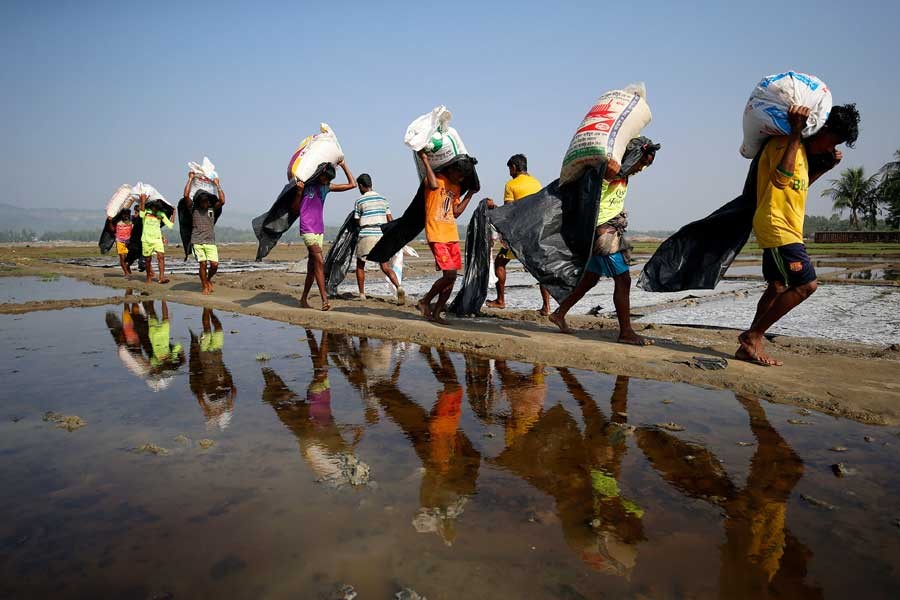International humanitarian agencies are "uncomfortable" with the government move to relocate 100,000 Rohingya refugees to the southern Bhasanchar Island.
They are concerned that the island itself is vulnerable to extreme weather and the refugees would not be given free and informed choice for relocation.
Recently the government announced that preparations for relocating the Rohingya people were completed.
They would be relocated to Bhasanchar of Hatiya upazila in Noakhali district in two months, the government said.
"We don't know what the physical condition of Bhasanchar is," assistant high commissioner of UNHCR George Okoth-Obbo told the FE recently.
"So far, we have come to know the island itself is prone to extreme weather conditions like cyclone and high tide," he added.
Mr Okoth-Obbo, who is the head of global operations of UNHCR, noted that shifting the Rohingya people to that place is 'unrealistic'.
"And we do not know who will be shifted to that place, what will be the selection criteria," he said.
The foreign secretary of Bangladesh recently said that the government was ready to allay the fear of the international agencies over the Bhasanchar issue.
"If necessary, we will take them to the island by helicopter to show what arrangements we are making for the relocation," he said.
He made the remarks while addressing a seminar on the refugee crisis recently.
Mr Okoth-Obbo said he had talked with a good number of refugees during his five-day visit to Bangladesh.
He found a sense of uncertainty among the refugees over the issue of relocation.
Earlier addressing a briefing, he urged the government to provide "suitable space" for relocating hundreds of Rohingya people in Cox's Bazar.
These refugees have been identified as vulnerable to the onslaught of the monsoon season.
The UNHCR and other international humanitarian agencies identified 200,000 refugees as most vulnerable to the extreme weather conditions like cyclone, landslide and flooding.
The government has allocated 500 acres of land near the Kutupalong camp but it will take time to make this place habitable, he added.
He said that the UNHCR was concentrating on creating the 'right condition' for the Rohingya's safe return.
He said such a condition in Myanmar was not created yet, he added.
"Right now when we are talking, the Rohingya are fleeing to Bangladesh," he said.
He also expressed his concern over the poor inflow of assistance for conducting humanitarian response to the Rohingyas.
The UNHCR's total requirement was over US$ 950 million, but so far it received only 20 per cent of that, he said.
In a recent report, the advocacy group Refugees International (RI) said the Bangladesh government's plan to relocate Rohingya refugees to Bhasanchar has been seen as a "cause for concern."
Natural disasters like flooding, storms and cyclones, in addition to the island's reduced accessibility, are identified as a breach of rights of the Rohingya people.
The Inter Sector Coordination Group (ISCG), a platform of international humanitarian agencies, also expressed their reservations about the plan.
"Basic questions over the island's habitability remain unanswered," the ISCG said.
Talking to the FE, disaster management secretary Shah Kamal said the government had taken all measures for ensuring safe inhabitation of the Rohingyas on the island.
International agencies should have no concern over it, he added.
On November 14 in 2017, the Executive Committee of the National Economic Council (ECNEC) approved a Tk 23.1215 billion project for building temporary shelters for the Rohingyas at Bhasanchar.


